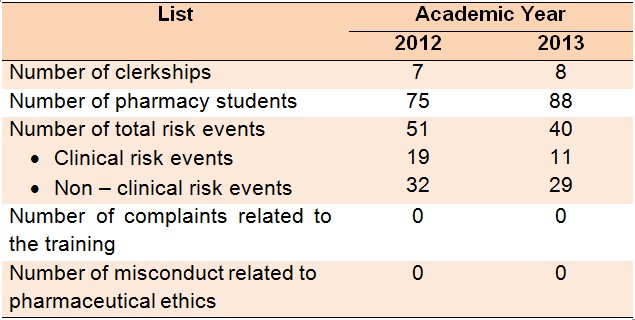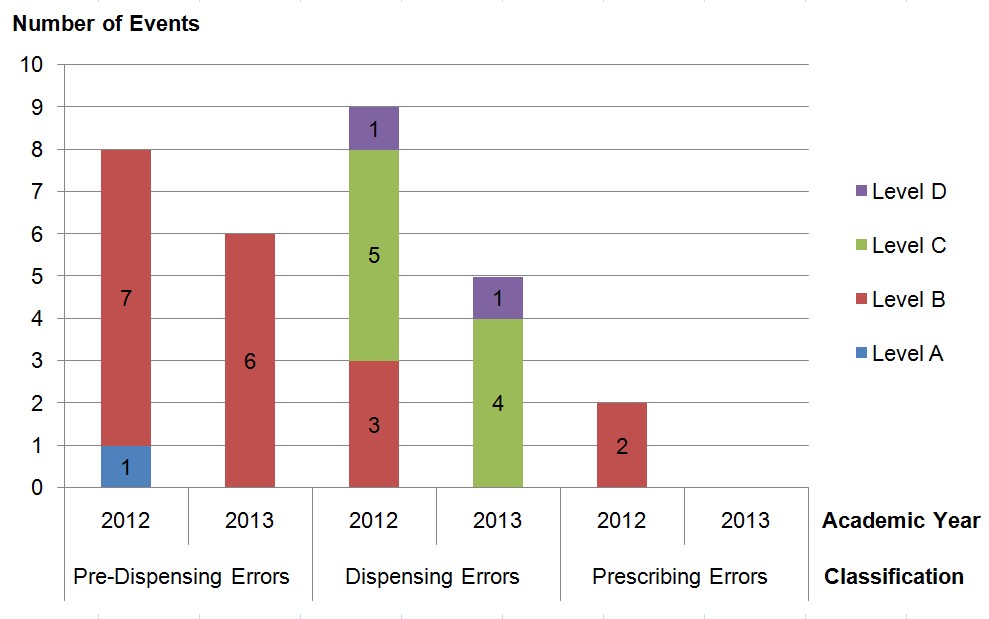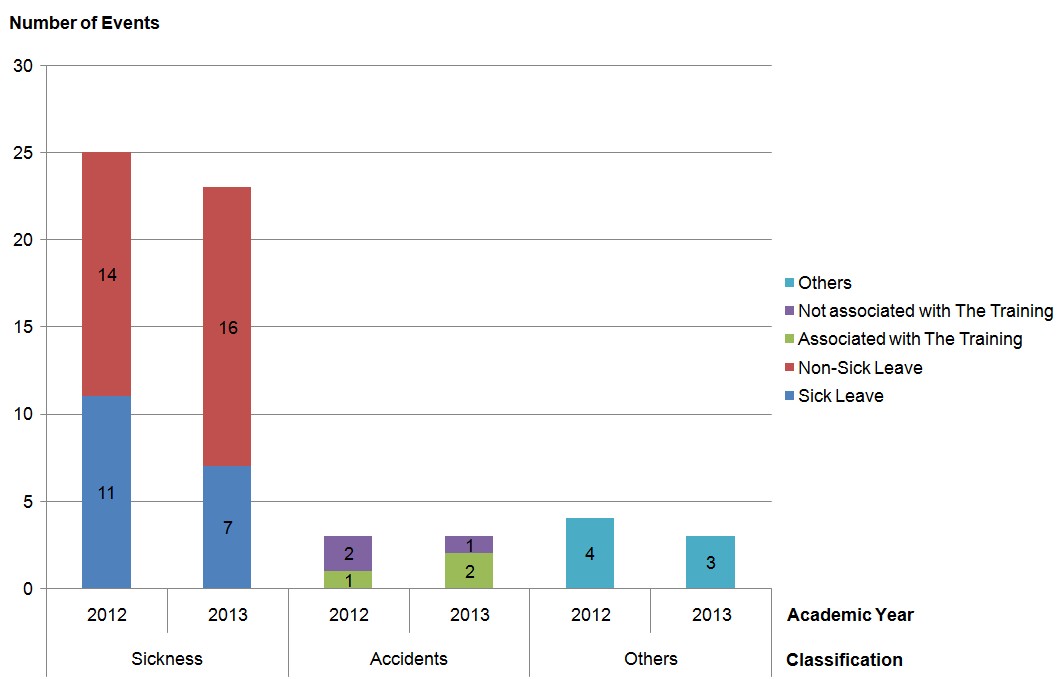


Theme
4II Learning / eLearning 1
INSTITUTION
Pharmacy Department, Chiangrai Prachanukroh Hospital

Chiangrai Prachanukroh Hospital has been a training sites for undergraduate pharmacy students for many years. We provide various 6-week pharmaceutical care clerkship courses, and 7 rotations per year of the doctor of pharmacy curriculum from nationwide universities for the sixth year pharmacy students . With long term experience in student training, we found that several clinical and non-clinical risks occurred during the training period in our hospital. Though we have had a risk management program implemented throughout the hospital, we did not have a systematic process of risk identification, monitoring, reporting, and evaluation of risk occurences in pharmacy student training. For this reason, we developed a new risk management program in order to identify and minimize risks related to pharmacy students. The purpose of this research was to evaluate the program regarding risk events that was first implemented in academic year 2012.
Risk management activities in pharmacy student training are as follow:
1. Before starting the training in academic year 2012:
1.1 We revised the number of clerkships and the number of students per rotation to be the number that would allow us to arrange the training appropriately.
1.2 We determined the level of practice permission for students and supervision methods in each clerkship.
1.3 We created a manual for pharmacy student training in Chiangrai Prachnukroh Hospital. The contents in the manual are about risk communication and satisfying behaviors of pharmacy students during the training period.
2. The content and duration of the orientation process was adjusted. The duration was extended from 2 hours to 4 hours on the first day of every rotation. We also had a section to let the students brainstorm about the possible risks that could happen during the training period before learning about the previous risk scenarios.
3. We performed a formal risk monitoring in the third week of training. Informal risk monitoring was often performed by a small group talking with students or pharmacist preceptors.
4. Risk occurrences were collected from self-reporting by the students and individual interviews.
5. The summary of risk events was sent to the pharmacist preceptors for further gap analysis to improve quality of risk management program and also presented to the pharmacy students in the orientation session.
Implementation of this program could help identify risk occurrences and increase risk awareness by pharmacy students. The information we received helps us to improve the program to minimize the risks in the subsequent year.
Risk management program could raise awareness of pharmacy students to the risks that could occur in the training period. In addition, this program could be the model for other pharmacy student training site hospitals. However, continuous program improvement should be organized and more data should be collected to evaluate program effectiveness.
The authors would like to thank the committe of Medical Education Center, Chiangrai Prachanukroh Hospital, Chiangrai, Thailand for valuable comments and funding support for the attending of AMEE 2014 conference.
Table 1 Summary of Risks in Pharmacy Student Training

Note: "Clinical risk" is defined as the risk that concerning about patient safety.
"Non - Clinical" risk is defined as the risk other than the clinical risk.
Figure 1 Cinical Risk Events Classification

Figure 2 Non - Cinical Risk Events Classification

World Health Organization. Patient Safety Curriculum Guide: Multi-professional Edition. Available from: http://whqlibdoc.who.int/publications/2011/9789241501958_eng.pdf?ua=1. Accessed date 15 July 2014.
 Send Email
Send Email